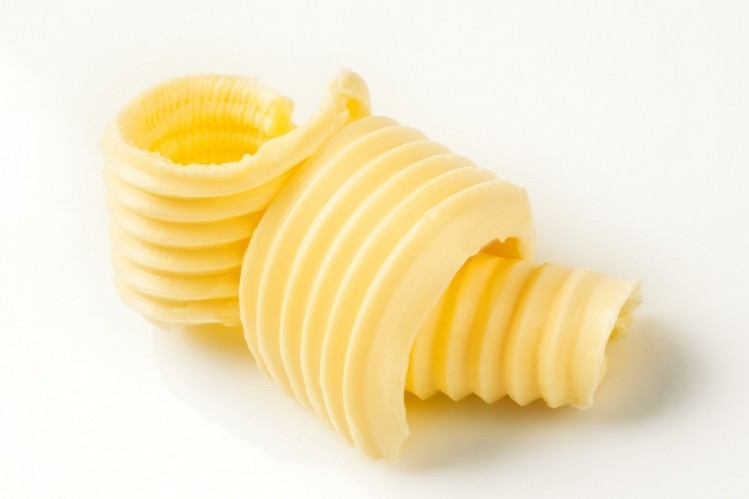Study reanalysis links omega-6 rich foods with heart disease risk

The resurrected clinical trial data suggests that people who follow health advice to cut out saturated fats and increase intakes of polyunsaturated fatty acids – including omega-6s found in healthy margarines and spreads – may be at increased risks.
Published in the British Medical Journal (BMJ), the researchers report on a reanalysis of clinical trial data from the 1960s that had been long thought lost. Using modern statistical techniques, the US team behind the research believe that they have found ‘convincing’ evidence that that linoleic acid (omega-6 fatty acids) are linked with a higher risk of early death from any cause, as well as increased risk of heart disease and death from heart-related conditions.
Led by Dr Christopher Ramsden from the United States National Institutes of Health (NIH), the research team says their findings could have important implications for worldwide dietary recommendations. However Ramsden said that he wouldn't necessarily say that current advice “is necessarily completely wrong.”
“What happened is that in the 1960s all polyunsaturated fats were considered the same,” he explained. “They were grouped together under one mechanism of being able to lower blood-cholesterol levels.”
“Then, over the ensuing decades, it became clear as science progressed that there were multiple types of polyunsaturated fats, and these compounds potentially have distinct biochemical and health effects.”
‘Considerable debate’?
In an accompanying BMJ editorial, Professor Philip Calder from the University of Southampton, UK, said that the fresh analysis "provides important information about the impact of high intakes of omega 6 PUFAs, in particular linoleic acid, on cardiovascular mortality at a time when there is considerable debate on this question."
Calder added that the results argue against a ‘saturated fat bad, omega 6 PUFA good’ dogma and suggest that national guidelines on omega-6 PUFAs may be misguided.
Catherine Collins, principal dietitian at St George’s Hospital London, UK, noted that the scientific knowledge of diet and heart disease has become much more sophisticated over the intervening 40 years between the clinical trial and the reanalysis.
“We now know that reducing artery inflammation – by boosting monounsaturated fat intake helps stabilise artery walls and make them more resistant to damage,” she said.
“Should we be concerned about our current intake of omega-6 polyunsaturates- linoleic acid in particular?” questioned Collins. “As a Dietitian I think not.”
“Our diet is now naturally higher in mono-unsaturates which is protective against omega-6 fats, but for the older generation who still choose polyunsaturated margarines, and fry foods regularly in corn or sunflower oils, a change to ‘vegetable oil’ is all that is necessary to limit risk from linoleic acid,” she said.
Inneke Herreman, secretary general for IMACE, the European Margarine Association, said in order to reduce the risk of heart disease many international health authorities, including the EFSA and the WHO, recommend an intake of PUFA up to 11% of daily energy with a total omega-6 intake up to 9% of daily energy.
This is less than the levels of 15% daily energy used in the clinical intervention, she noted.
“Actually, the available clinical trial evidence demonstrates clear benefits of Omega-6 consumption on blood lipids levels and large other well-designed and more recent prospective cohort studies cohorts demonstrate that higher intakes of omega-6 PUFA or total PUFA are associated with reduced risks of coronary heart disease events,” said Herreman.
Meanwhile the UK’s NHS Choices service said it is worth noting that vegetable oils have very different characteristics in terms of the proportions of omega-3 or omega-6 content and the types of polyunsaturated, monounsaturated and saturated fatty acids that they contain.
“Oleic acid and linoleic acid are likely to have different properties to linoleic acid, and so it cannot be assumed any effect seen here is typical of all vegetable oils,” it said.
Study details
The new study is actually a reanalysis of data that had not been included in the original 1978 publication of results from the Sydney Diet Heart Study.
This trial that was conducted from 1966 to 1973, and followed 458 men aged 30 to 59 years old who had a history of heart disease; about half were told to replace the saturated fats they consumed from animal and dairy sources with omega-6 linoleic acid, which is commonly found in safflower oil or margarines made from it. The other half were not told to change their diet in any way.
When the study was published in 1978, researchers noted an increased risk of early death from any cause among the omega-6 group, but did not break down the data by what caused the deaths.
Now, Ramsden and his team have recovered and analysed the original data from the trial to compare death rates from all causes, cardiovascular, and coronary heart disease.
Their results show that the omega-6 linoleic acid group had a higher risk of death from all causes, as well as from cardiovascular disease and coronary heart disease, compared with the control group:
- All cause death was found to be 17.6% in the omega-6 group versus 11.8% in controls
- For cardiovascular disease risks were: 17.2% for omega-6 vs 11% control
- Coronary heart disease: 16.3% omega-6 group vs 10.1% in control group
Ramsden and his team said that their recovery of the missing until now missing data "has filled a critical gap in the published literature archive."
They added that the findings "could have important implications for worldwide dietary advice to substitute omega-6 linoleic acid (or polyunsaturated fatty acids in general) for saturated fatty acids."

















